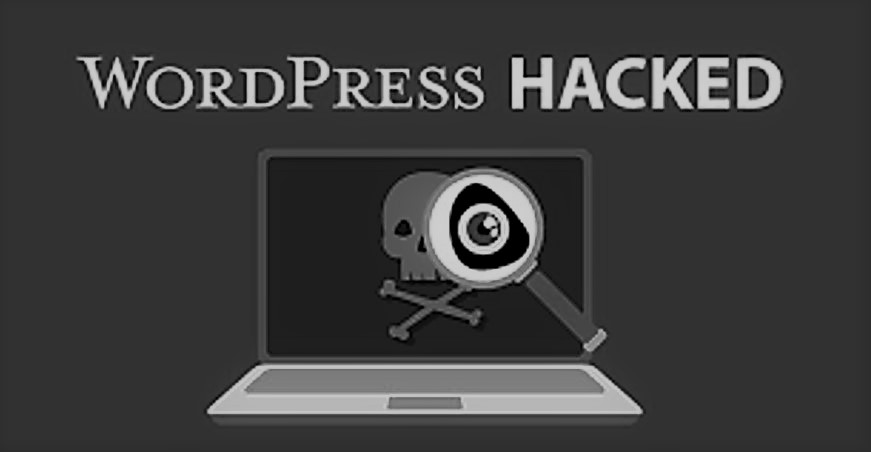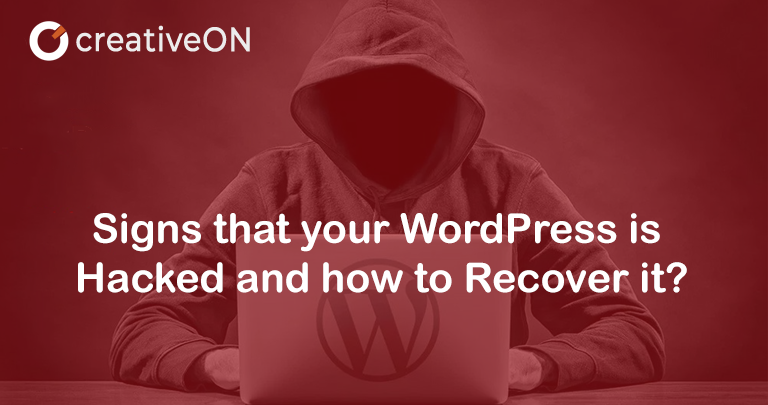More than 2,200 cyber attacks happen, and many people are affected by these attacks. Every site or account over the Internet is a potential target for hackers to break into, and WordPress is the most susceptible platform. It is quite possible that several attempts might have been made on your WordPress site as well. But not to worry! In this article, we shall discuss some of the signs to look for to see if your website has been infiltrated or not and also the solutions if somebody has hacked into your site.
How is WordPress Sites Hacked?
Hackers and other malicious people are always on the lookout to break into any site; therefore, they are the people who know about the vulnerability that comes with WordPress. The following are some of the ways through which someone can hack into your WordPress site:
Backdoors:
It is a code that allows the hacker unauthorized access to your server. It can spread through an infected file hidden among the normal ones or through malware. It can also be caused due to an infected plugin.
Brute-Force Attack:
It is a very convenient method in which, instead of exploiting the vulnerabilities of WordPress, the hacker tries different combinations of usernames and passwords to gain unauthorized access to your WordPress core files.
Cross-Site Scripting:
Cross-Site Scripting or XSS is a malicious JavaScript code that is injected into the website. When the users open the infected website, this code is activated without them knowing, and the malicious script is taken as a trusted source from the website.
SQL Injection Attack:
A malicious code that is injected into your data entry files is called an SQL Injection Attack. This form of attack exposes sensitive information to the hacker, and your privacy is compromised.
Infected Redirects:
It is a tactic played by hackers when they redirect your website’s visitors to a questionable website without them having any idea what is going on.
Pharma Hacks:
It is a type of SEO spam attack that targets vulnerable sites on WordPress and injects them with malware after hacking it. It is also known as Google Viagra Hack. Cyber attackers usually create subdomains, keywords, and redirects to push their content on search engines in front of the audience.
Distributed Denial of Service:
Distributed Denial of Service (DDoS) has been here for a long time. To make this attack work, hackers send many requests from compromised computers or devices to the targeted websites, causing them to shut down. This affects the availability of the said website. It is slightly different from Denial of Service (DoS), in which a hacker diverts too much traffic towards the targeted website for it to handle, causing it to shut off.
Indicators of a Hacked WordPress Site

Hacking does not always mean that you have been logged out of your site. There are some times when the attackers feed onto sensitive information without kicking you out of your website. But there are some indicators that you can look into to check if your site has been infected or not. A few of them are as follows:
- The most obvious sign would be if you cannot log in to your WordPress Admin Panel, despite putting in the correct username and password.
- In case you have no trouble logging in, but you notice some content and design that was not uploaded by you or any other members who have access.
- If you notice a sudden change in the flow of traffic to your site.
- All of a sudden, the website has started redirecting the customers or has been sending spam emails.
- If the browser’s blocklist warnings have started to appear when people visit your website.
- You have started to lose your files.
- If the server logs show unusual activities or visits from unknown places.
- If a new admin member has appeared unexpectedly without your approval.
- If the security plugins of your website warn you about a potential breach.
It would be best if you always kept a close eye on minor details on your site to make sure that everything is secure.
Why do WordPress Sites become Vulnerable to Hackers?
The Internet is filled with ill-intended people who are always on the look for any possible chance to hack into someone’s account or website for multiple reasons. For the sake of this article, we shall focus on the reasons why a WordPress site becomes vulnerable to hackers.
Weak Passwords:
Most of the websites on WordPress that fell prey to the hands of hackers have weak passwords like 11223344. Passwords are your first line of defense against any malicious attack, so better think of something creative that is not easy to guess. Moreover, have a lengthy password with a mixture of alphabets, numbers, and symbols because it will add a secure cover against cyber attacks on your site.
Outdated Plugins and Themes:
One of the most common reasons behind the hacking of WordPress sites is that people do not update their core software, including plugins and themes. Every update brings an extra amount of security to your site and fixes bugs and other issues for you as well. But when the software is outdated, it becomes easier for the attackers to hack into your site. Consider a wall that has been standing erect with a lot of damage that has not been repaired in so long. It would be broken easily with minimum effort and basic tools. On the other hand, a wall that has been taken care of will withstand many of the blows struck at it. I hope this example highlights the importance of updating your plugins and themes on a regular basis to prevent your site from perpetrators.
Poor Website Codes:
Poor coding creates weak and vulnerable plugins and themes, which in turn, lowers the security standards of your WordPress site. Hence, this opens a peephole for cyber attackers. Therefore, you should always get your themes and plugins from the official WordPress platform or a trusted marketplace that provides routine updates and support.
How can you Recover your Hacked WordPress Site?

Numerous sites are hacked on a daily basis, and most of the time is recovered by the actual owner either by themselves or with the help of some professionals. WordPress is notorious for having a high number of hacked websites. Once you have come to know that your site is being hacked or suspect that it might get hacked in the future following are the steps you should take to either take it back or prevent the hacking from hacking:
Maintenance Mode:
If you suspect your account has been hacked and you can still log into your WordPress admin panel, put your site in maintenance mode instantly. By doing this, you can stop the traffic from opening your allegedly hacked website. It will secure their personal information and the device from the malicious element that has attacked your site. If visitors keep opening your hacked website, it could damage the trusting relationship you share with them, and your reputation could also be harmed. But you do not have to panic. Just go to the dashboard in the admin panel and turn the Maintenance Mode on.
Password Resetting:
Changing your password now and then is usually considered a good practice. If your site has been hacked, your login credentials are exposed to unwanted people. So the first wise thing would be to change your password to something long (at least 16 characters), having a combination of alphabets, numbers, and characters to make it difficult for people to guess it. Moreover, avoid using personal details as your password because they can be fetched easily, and your website security would be jeopardized. So you need to reset the passwords of your WordPress admin, FTP, database, and hosting account.
You can also seek assistance from different password generators over the Internet to come up with a stronger password. It is also advisable to enable two-factor authentication and restrict your login attempts to add an extra line of security to your WordPress site.
Up-to-date:
As many problems arise because of the use of the outdated version of WordPress and its core software. And to avoid these attacks or recover your website from the already happened attack, you should immediately update your core software. These updates will fix the holes in the protective wall standing around your website.
Deactivate Plugins and Theme
If your site gets hacked, you should deactivate all your plugins and themes and activate them one by one to pinpoint the infected one. When you are able to successfully mark the faulty installation, deactivate them and delete them immediately. Having extra and faulty WordPress installation is an open opportunity to create an access point for malware infestation to carry out WordPress hacks.
It is advisable to uninstall all the plugins and themes obtained from an untrusted source to be careful. To deactivate the plugins and themes, go to Plugins, then navigate to the Installed Plugins from your WordPress admin dashboard. To deactivate the plugin, click on the deactivate option below the title of the plugin. To deactivate multiple plugins at a time, select them, click the deactivate option from the dropdown menu, and click Apply.
WordPress Reinstallation
If none of those mentioned earlier methods works, it is an indicator that the core files of your WordPress site might be infected. In that case, you have to reinstall the core files and take a new start. To do so, head to the WordPress dashboard, go to the Updates and click the Reinstall button. Backup your files before starting the reinstallation process. Prevent overwriting the old website version of your website with the new one. Then compare the hacked WordPress system files with the new one to point out the corrupt file and delete it.

Use Admin Privileges:
As said before, one of the indicators of a hacked website is the addition of new members with WordPress admin privileges. If you find these unrecognizable users, remove them immediately and scan for potential threats.
Scans for Malware:
Malware is malicious code that can be removed from your WordPress sites using two methods, i.e., manually or with the help of a malware removal plugin. The latter option is convenient and efficient; therefore should be prioritized. Install the plugin and activate it to scan and remove malware codes.
Disable PHP Execution:
Hackers can use a backdoor to inject malware into your website’s Upload files. Disabling the PHP execution will also terminate the execution of that malicious code. To do so, you need to know some technical knowledge to generate the codes or seek the help of a professional.
WordPress Database Cleaning:
When you are finished cleaning your WordPress installations, the next step is to clean the database. Try to remove the records with malicious codes or the new records that you do not recognize to stop hackers from creating backdoors through a database injection. There are two ways to do this, i.e., manually or through a plugin.
Opting for manual cleaning can be risky because it can cause damage beyond repair if you accidentally delete the wrong record. Therefore, installing a plugin and activating it to carry out the process is better.
WordPress Sitemap Cleaning:
A sitemap is a draft that helps search engines find and improve your website’s content. If your website gets hacked, it will most certainly put a damp on your search engines’ ranking. It is better to regenerate a new sitemap after dealing with a malware situation. You can create a new sitemap using a WordPress plugin and then submit it to Google Search Console. It will take almost two weeks for a search engine to crawl your website again.
Contact Hosting Provider:
If you have shared hosting for your website, there is a high chance that the issue came from another website from the same server. Thus, contact your hosting provider to ensure that the security issue has affected more websites. Your hosting provider could also help recover your website because they ensure the performance and high security of your website.
At some point in life, you may have to face the issue where the security of your website or account may be compromised, but there are multiple ways to gain access back. The best way to deal with cyber attacks is to create a fortress around your website by using strong passwords, updating your core software, plugins and themes, and having a close eye on the content and the users in your WordPress admin panel. Most importantly, if anything goes wrong, do not need to panic. Take a deep breath and devise a plan to get your website back.
